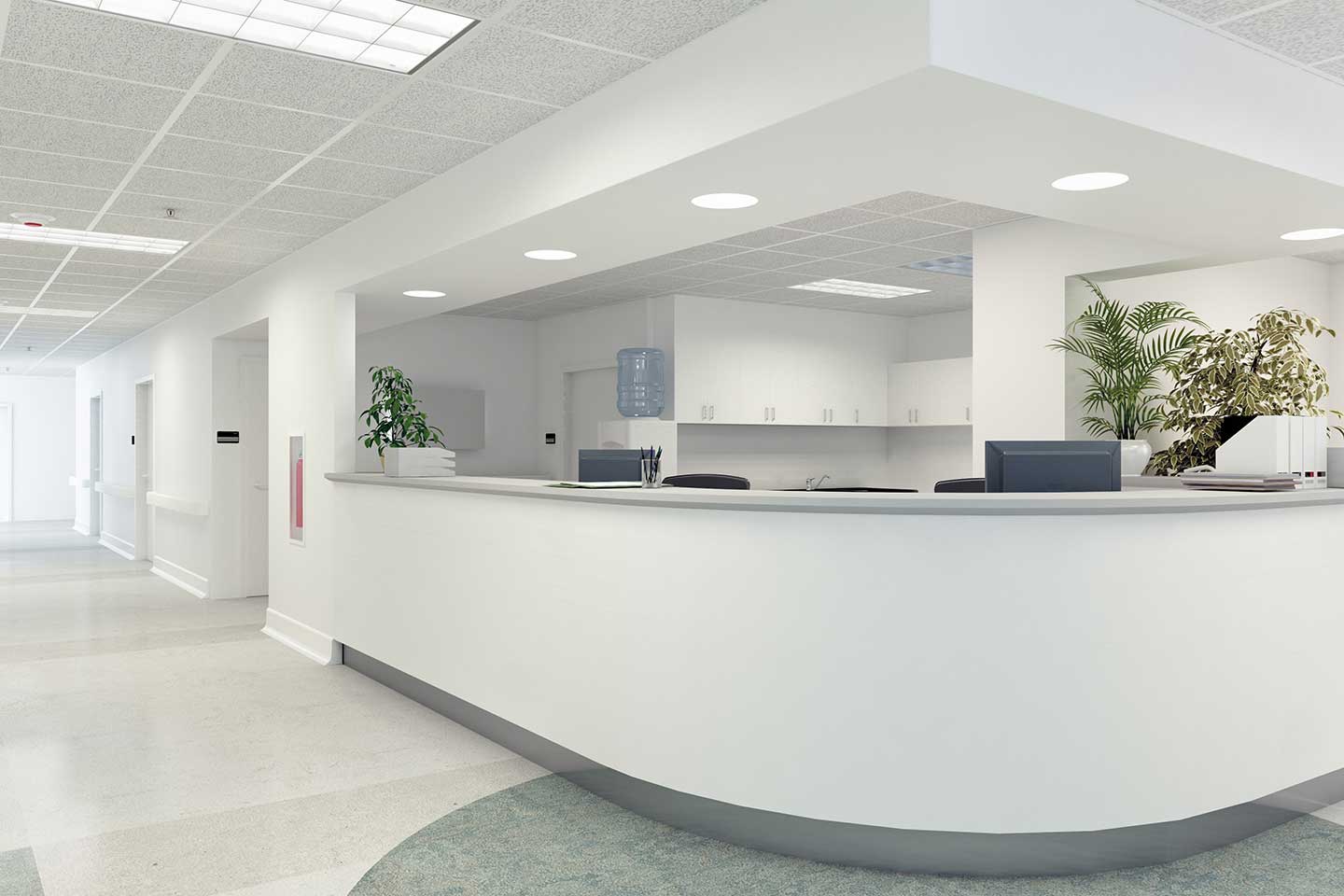State-organized early detection of breast cancer is evidently a successful project: since the introduction of statutory screening programs, demonstrably fewer women have died of breast cancer. But there is still room for improvement, as standardized screenings are not optimal for every woman. Current studies show how breast cancer screening can be methodologically refined and personalized. More efficient workflows could also reduce the burden on radiology facilities.
Challenges in early detection of breast cancer
Since the 1990s, there has been an increasing rollout of nationwide breast cancer screening programs in the United States and Europe. Age limits and screening intervals vary from country to country. In general, women between the ages of 50 and 70 are recommended to have breast exams at one- to two-year intervals.
Mammography is widely available as a standard examination for the early detection of breast cancer. It is relatively inexpensive, and its benefits have been scientifically proven. Nevertheless, the method is not perfect: sometimes tumors are missed, and sometimes women receive false-positive findings that cause concern and entail further stressful examinations. The required compression of the breast can also be painful at times and discourages many women from participating.
On the other hand, many institutes offering statutory mammography screening are under considerable pressure. This is because the workload of screening examinations is enormous, and the legally defined requirements are high. A lack of staff and scarce financial resources make it increasingly challenging to maintain mandatory quality standards.
So how can established screening programs be improved so that participants derive greater personal benefit? And how could radiology facilities be relieved at the same time without compromising the quality of the screenings? Research teams around the world are working hard to find solutions to improve breast cancer screening from a medical point of view – and to make it more efficient from an organizational point of view.
ToSyMa study: Digital tomosynthesis detects more carcinomas
Digital mammography as an X-ray examination of the female breast is currently the standard method in organized early breast cancer detection. However, especially in women with high mammographic breast density, it often provides unclear results. Superimposition effects can cause abnormalities to be mistaken on the one hand, while on the other hand smaller tumors can easily be overlooked.
The large-scale ToSyMa study at the German University of Münster is currently investigating the extent to which digital breast tomosynthesis (DBT) advances early breast cancer detection.
Tomosynthesis is a more advanced X-ray-based method for the layered examination of the breast, which allows the tissue structures to be visualized without superimposition. It thus counteracts the typical weaknesses of conventional mammography. To allow comparison with previous images and visual assessment of breast density, a synthetic 2-plane mammogram can be calculated from the generated pseudo-3D data sets.
The ToSyMa study recruited nearly 100,000 women to compare the combination of DBT and 2D mammography with the previous standard method. Evaluations have not yet been completed, but initial results suggest significant benefits of the innovative technology: Overall, the detection rate of invasive breast cancer was increased by 48 percent with DBT and 2D mammography. In participants with extremely dense breast tissue (ACR category d), tomography was even clearly superior, with a nearly 250 percent increase in detection rate.
In phase 2 of the ToSyMa study, the long-term effects of improved early detection of breast cancer will now be tested by evaluating data from the national cancer registry, among other things.
In dense breast tissue: DENSE study shows advantages of MRI
The risk of breast cancer in women with high breast density, i.e., a high proportion of mammographically dense breast tissue, is about two to four times higher. At the same time, X-ray-based mammography is significantly less accurate for them. In addition to digital breast tomography, contrast-enhanced magnetic resonance imaging (MRI) is a particularly suitable alternative procedure. The detection of invasive breast cancer by MRI is essentially achieved by detecting locally increased blood flow, which is particularly typical of fast-growing, aggressive tumors. As a result, MRI reveals different tumor characteristics than X-ray-based techniques. Compression of the breast is not required for MRI examination.
The added value of MRI in early detection of breast cancer, especially for women with dense breast tissue, is the subject of the Dutch DENSE study. More than 40,000 women with very dense breast tissue (ACR category d) were randomly offered complementary breast MRI, with 59 percent accepting the offer. The result: the carcinoma detection rate in the group of MRI participants was 16.5 per 1000, significantly higher than that in the control group (6.0 per 1000). In addition, the interval carcinoma rate was reduced from 5.0 per 1000 in the control group to 2.5 per 1000 in the MRI group.
However, the improved detection is also accompanied by more false-positive findings. In fact, the recall rate in the DENSE study was just under 10 percent, whereas it is typically around 3 percent in mammography screening programs. Of those women who subsequently received a biopsy, 26.3 percent actually had an invasive tumor, so false alarms were raised in nearly 3 out of 4 cases.
The low specificity, as well as the higher costs and time involved, currently argue against widespread use of MRI in the early detection of breast cancer. However, especially for high-risk patients or those with high breast density, the method could be a useful supplement or alternative to mammography.
How automated breast ultrasound can be improved by artificial intelligence
As a complementary imaging modality, sonography has had its fixed place in breast diagnostics for decades. In young women, sonography is usually the first examination in case of a concrete suspicion, and doctors also frequently resort to ultrasound in case of unclear mammography findings. As with MRI, the breast does not need to be compressed.
Currently, however, supplementary ultrasound examinations are not systematically used in organized breast cancer screening (with the exception of Austria). A possible disadvantage of the method is that the results are highly dependent on the experience of the medical staff. As an alternative to conventional sonography, automated 3D ultrasound systems (ABUS) designed specifically for use with dense breast tissue have been available for several years. These systems allow standardized breast sonography with reproducible results. The examination itself can be delegated to trained MTAs and is completed in minutes thanks to the automated process. However, automated 3D ultrasound generates a large number of images, which can result in increased time for medical staff to complete findings.
A research team at the Swiss University of Zurich, including b-rayZ’ Cristina Rossi, Andreas Boss and Alexander Ciritsis, has now set out to close this gap using AI. In a retrospective study, an artificial neural network was trained to distinguish between normal and abnormal ultrasound findings and to highlight suspicious areas using 645 ABUS data sets from a total of 113 patients.
The result: In summary, the trained AI models can be standardised as an independent second opinion tool in ABUS examinations according to the BI-RADS catalogue. The neural network was able to detect and classify abnormalities in breast ultrasound with similar accuracy as experienced radiologists.
The implementation of these AI models in examinations thus enables a more reliable assessment of the results and reduces the workload for radiologists.
MyPeBS and WISDOM: Towards individualized early detection of breast cancer
Most government-organized screening programs follow a “one fits all” approach: age limits and screening intervals are defined without taking into account the individual risks. Often, only women with a proven hereditary high-risk constellation are eligible for intensified screening examinations.
Breast cancer risk differs from woman to woman, however. Genetic predisposition, hormonal factors, BMI and lifestyle all play a role. Scientists are therefore intensively discussing personalized early detection strategies. The basic idea is that by offering women an individualized screening schedule, the breast cancer detection rate could be increased, while the proportion of false-positive findings is reduced.
Various risk models are available to determine an individual’s breast cancer risk. Some are based primarily on genetic factors, while others incorporate additional data such as breast density or the timing of menarche and menopause. The mathematical models used are continuously validated and improved.
In the U.S. and Europe, two large studies on the benefits of risk-adapted screening compared to conventional screening have been initiated in recent years. Since 2016, the Women Informed to Screen Depending on Measures of Risk (WISDOM) study has been underway in the U.S., recruiting more than 60,000 women. About 17,000 of them will receive individualized screening recommendations based on genetic and clinical risk factors.
In Europe, the European Commission-funded My Personal Breast Screening (MyPeBR) was launched in 2019, involving about 85,000 women aged 40 to 70. It aims to provide detailed information on the potential advantages and disadvantages of risk-stratified screening. A sub-study is taking an in-depth look at the psychological, socio-economic and ethical implications of personalized screening.
Conclusive results are still pending, but it is already clear that individualized early detection of breast cancer based on personal risk is achievable. Still, its benefits, potential disadvantages and risks, cost-effectiveness and acceptance by women need to be intensively researched.
New technologies and strategies can improve early detection of breast cancer
There is clear evidence that government-organized screening programs can be further improved and optimized. One possible starting point is the further development of imaging techniques to compensate for the weaknesses of conventional mammography. At the same time, radiological facilities could be relieved by increasing standardization and automation of processes.
Another promising option for early detection of breast cancer is personalized screening strategies based on the individual risk profile. They could potentially result in an improved cost-benefit balance for the individual participant by helping to detect more tumors at early stages while avoiding false-positive findings.






